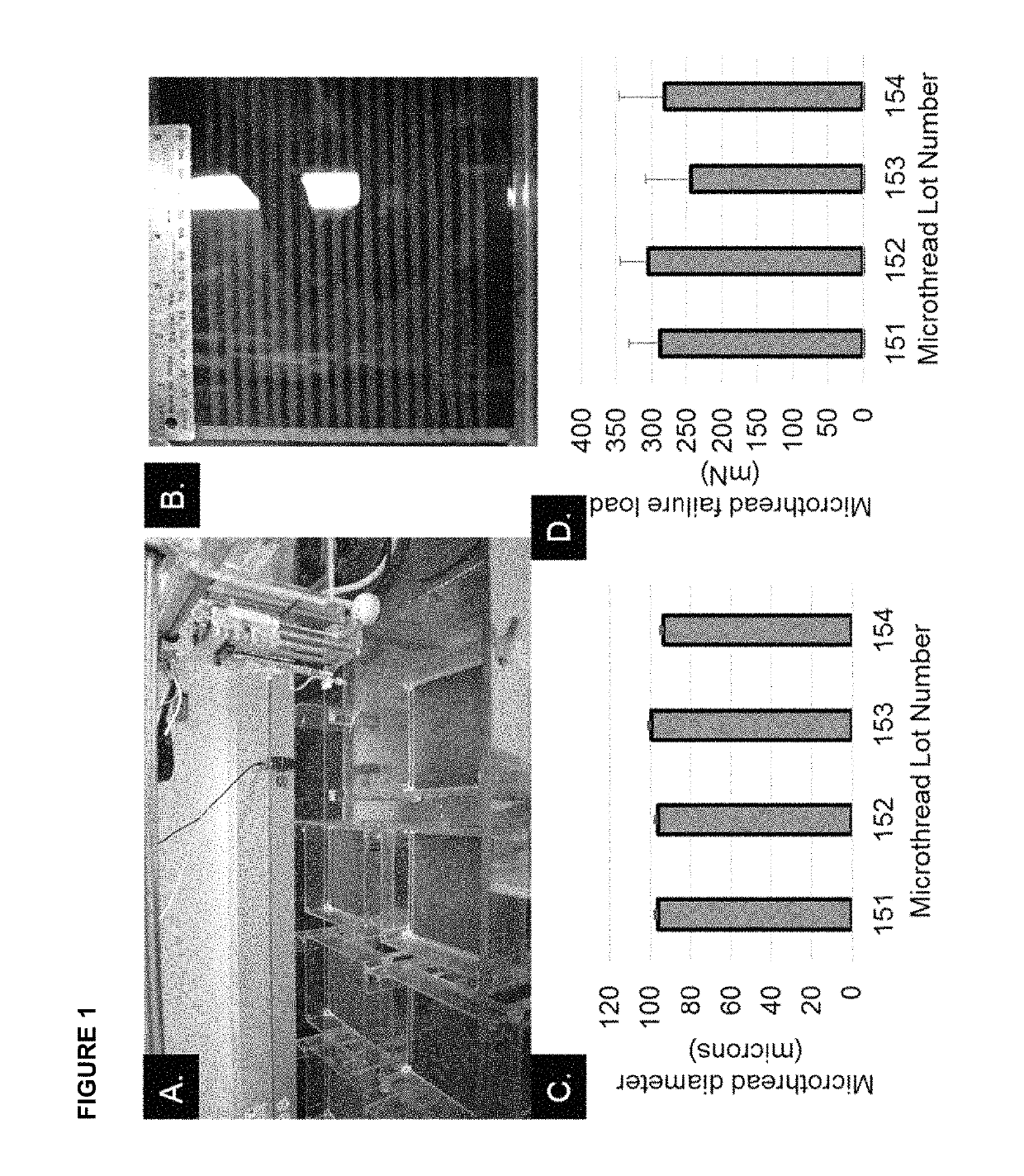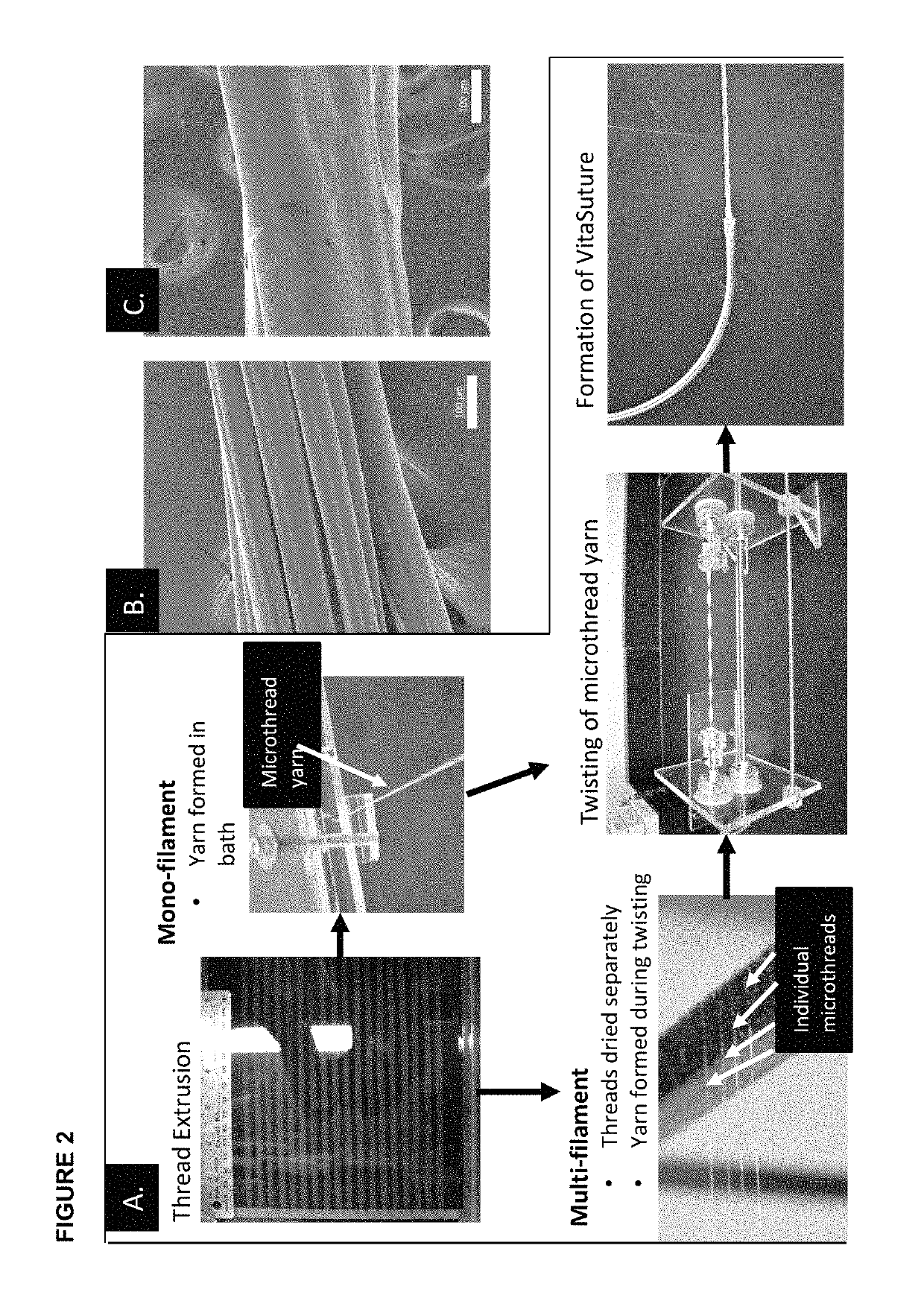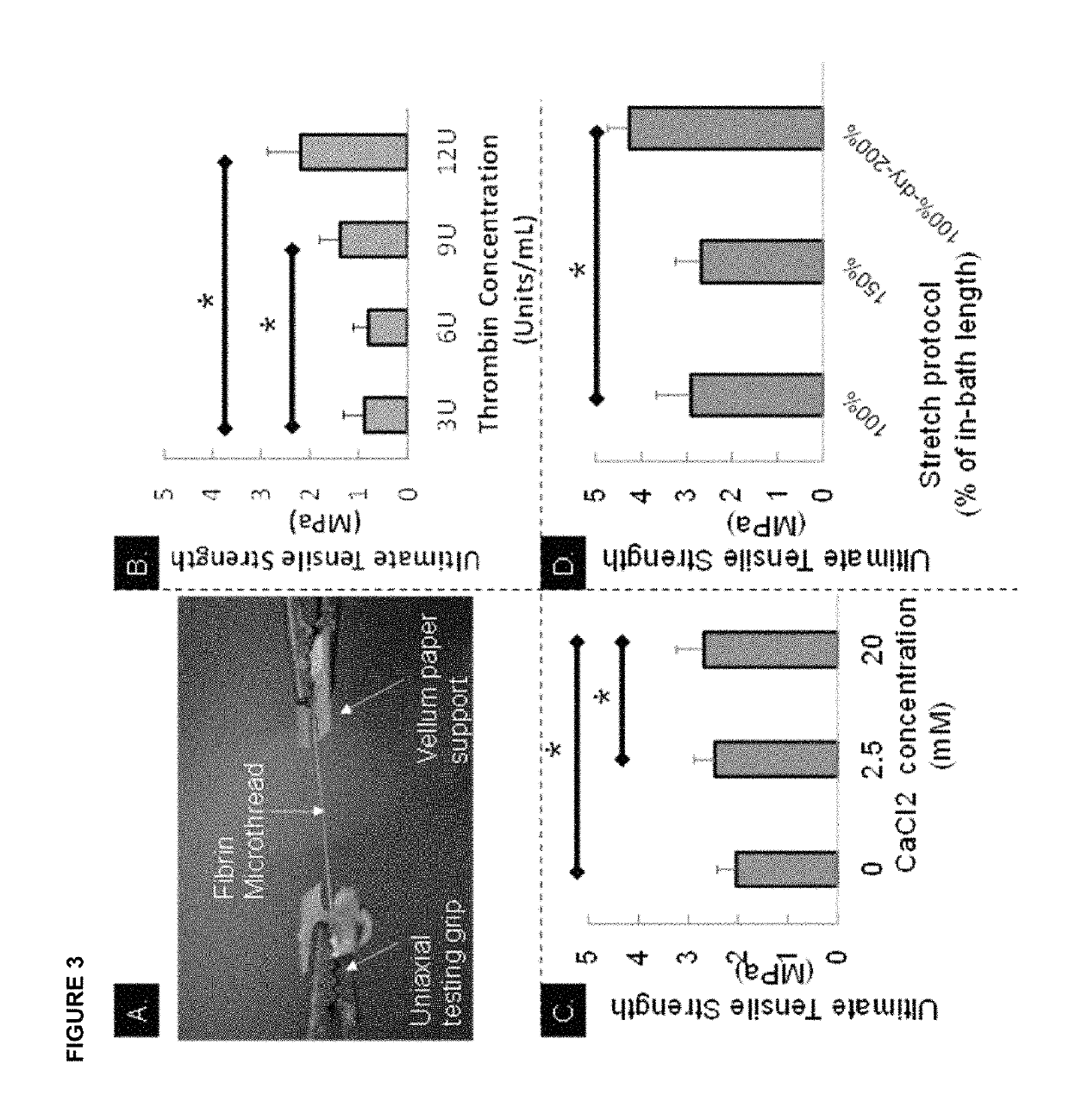Compositions and methods for wound healing
a technology of compositions and wounds, applied in the field of compositions and methods for wound healing, can solve the problems of tissue necrosis at the ligation site, mechanical stress on the surrounding tissues, scarring, etc., and achieve the effects of preventing or reducing excess collagen deposition in the target tissue, promoting wound closure and/or healing, and improving scar appearan
- Summary
- Abstract
- Description
- Claims
- Application Information
AI Technical Summary
Benefits of technology
Problems solved by technology
Method used
Image
Examples
example 1
Mechanical Properties of Fibrin Microthread Sutures
[0110]12-fiber bundles of fibrin microthreads were assembled into a yarn and their tensile properties evaluated. Prior to testing, samples were hydrated for a minimum of 10 minutes to ensure complete hydration. The threads were anchored into a set of custom grips on an Instron ElectroPuls E1000 designed to mimic those suggested by United States Pharmacopeia (USP) for testing of sutures with a gage length of 2 cm. A single overhand knot was tied in the middle of each sample in keeping with USP suture testing methodology. Samples were then pulled to failure at a strain rate of 4 cm / min, recording load and displacement. Device samples demonstrated consistent properties over n=6 samples. Ultimate load was 1.56±0.11N, strain at failure was 214±58%, stiffness was 49.02±4.54 mN / mm, ultimate tensile strength was 2.26±0.16 MPa, and Young's modulus was calculated to be 14.66±1.23 MPa.
[0111]Table 2 below provides a comparison of the Young's mo...
example 2
Production of Fibrin Microthreads
[0113]Fibrin microthreads are produced using a three axis electromechanical extrusion head to “print” fibrin microthreads in a buffer bath (see FIG. 1, panels A-B). The production system allows for the generation of threads with lot-to-lot consistency in both thread diameter and thread failure load (see FIG. 1, panels C and D). The produced fibrin microthreads are used as building blocks for additional products such as sutures.
example 3
Production of Fibrin Microthread Sutures
[0114]Suture products can be generated in both a multifilament and monofilament form of varying sizes. Multifilament sutures are formed by fully drying individual microthreads after formation in the bath. Varying numbers of dried threads can then be twisted together with a controlled twist density to produce a multifilament microthread yarn. FIG. 2, panels A-C, differentiate the production process for multi- and mono-filament sutures and show scanning electron micrographs of each type of suture.
[0115]Monofilament sutures are produced from the same microthread extrusion process as used for multifilament sutures. Prior to removal from the extrusion bath, varying numbers of microthreads are carefully pulled together in the buffer solution to form a single, cohesive thread. The thread is then removed from the bath and allowed to dry.
[0116]After drying of both the multi- and mono-filaments, sutures are formed by inserting the dried material into th...
PUM
| Property | Measurement | Unit |
|---|---|---|
| Young's modulus | aaaaa | aaaaa |
| Young's modulus | aaaaa | aaaaa |
| Young's modulus | aaaaa | aaaaa |
Abstract
Description
Claims
Application Information
 Login to View More
Login to View More - R&D
- Intellectual Property
- Life Sciences
- Materials
- Tech Scout
- Unparalleled Data Quality
- Higher Quality Content
- 60% Fewer Hallucinations
Browse by: Latest US Patents, China's latest patents, Technical Efficacy Thesaurus, Application Domain, Technology Topic, Popular Technical Reports.
© 2025 PatSnap. All rights reserved.Legal|Privacy policy|Modern Slavery Act Transparency Statement|Sitemap|About US| Contact US: help@patsnap.com



